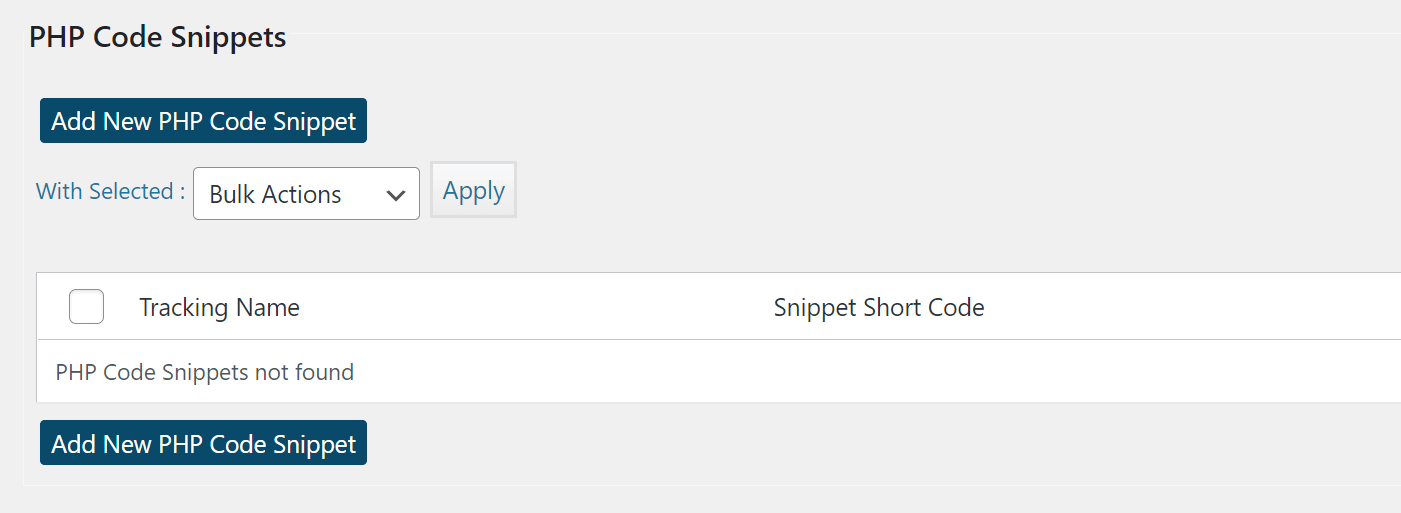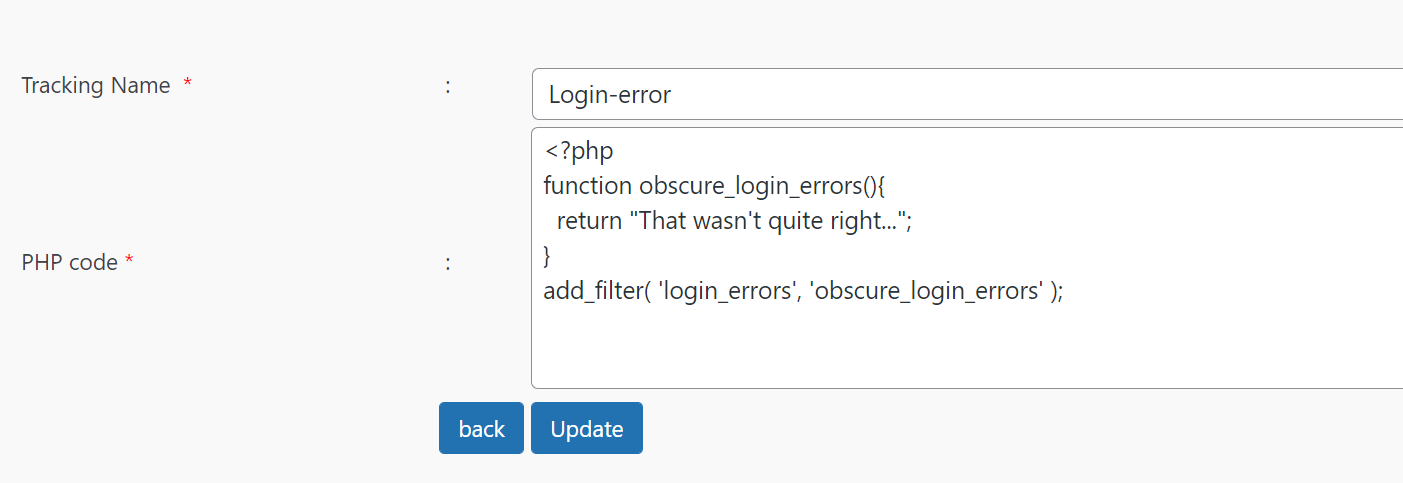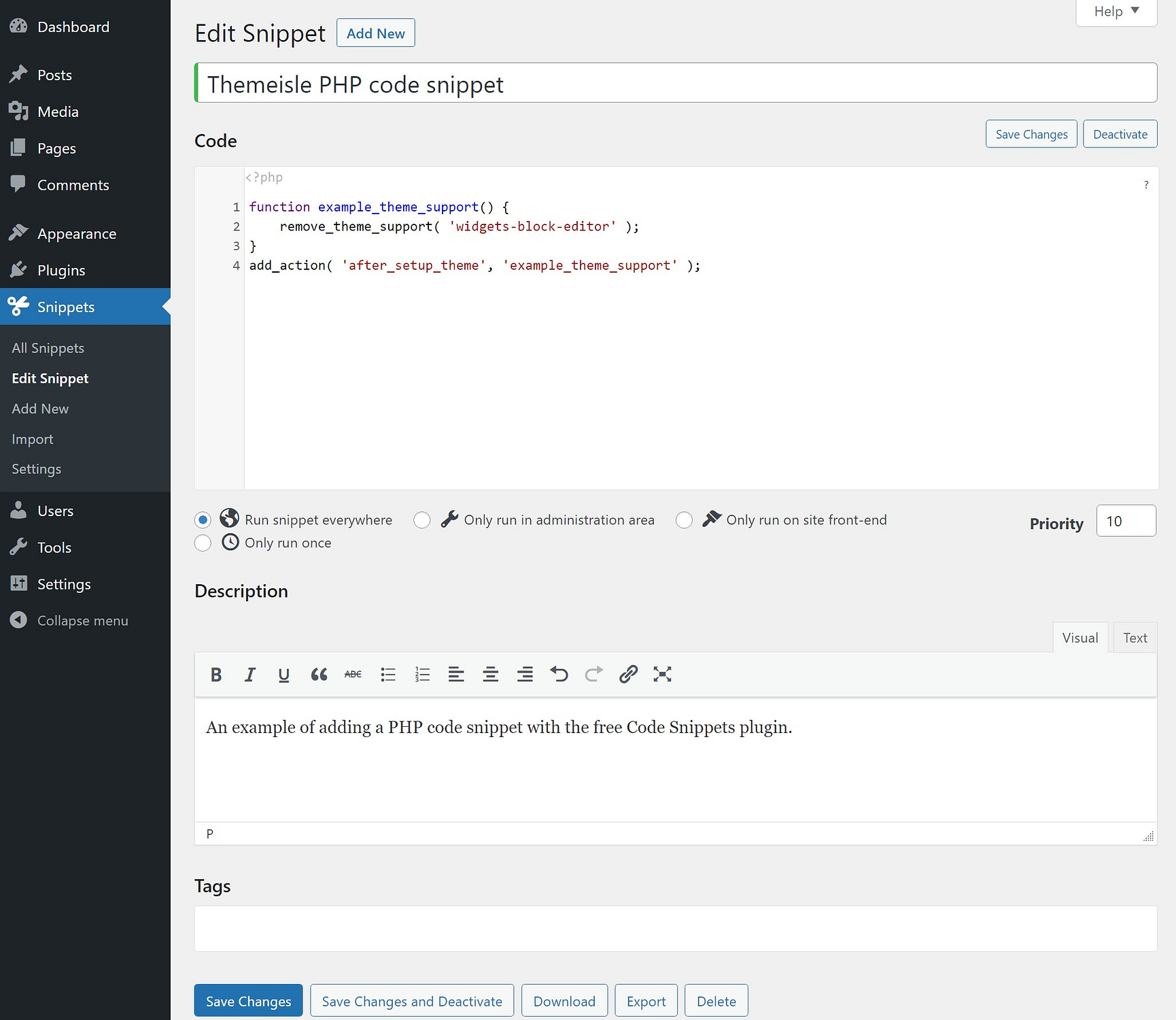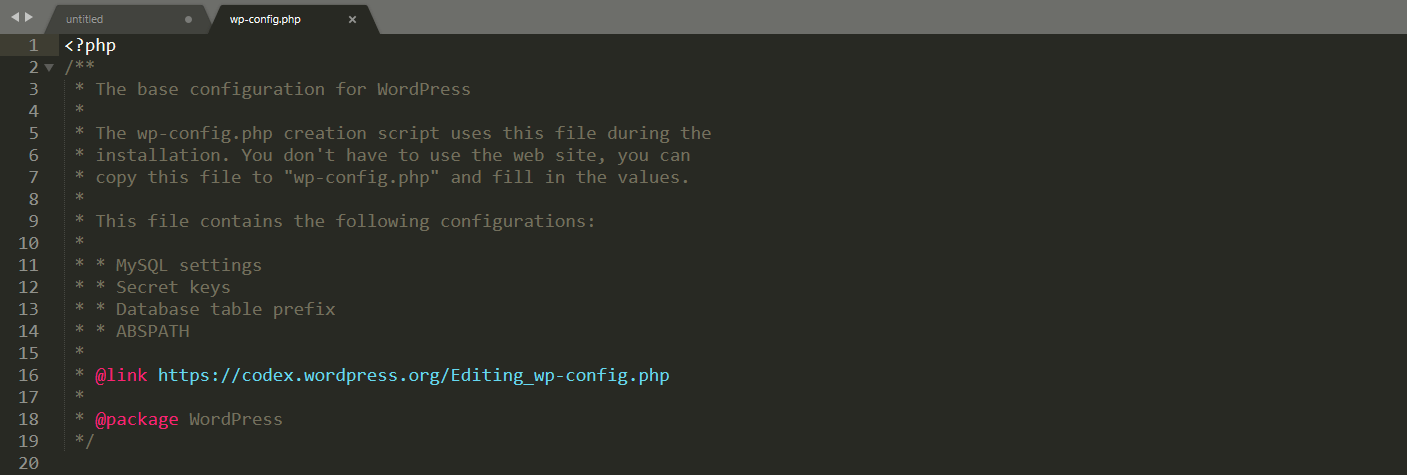Upload a Php Folder to Wordpress Page
Themeisle content is free. When you lot buy through referral links on our site, we earn a committee. Learn More
PHP is one of the most pop programming languages on the spider web. In fact, 78.eight% of all websites[i] use PHP in one mode or another. If you use WordPress, you lot're also using PHP, even if you don't interact direct with any code. PHP in WordPress makes most of the features that you lot apply possible, and understanding how it works is necessary if yous desire to make big changes to your website.
There are a lot of means to edit PHP in WordPress or to add together code to your site. Which arroyo you utilize will depend on your level of condolement editing WordPress files, but the process is a lot easier than you might imagine.
In this article, we'll briefly become over how PHP works. Then we'll show you four means to add PHP in WordPress, whether you'd prefer to use a plugin or do so manually. Let'south get to piece of work!
📚 Table of contents:
- An introduction to PHP in WordPress
- 1. Convert PHP into WordPress shortcodes
- 2. Add together sitewide code snippets with a plugin
- 3. Customize your kid theme in WordPress
- 4. Use an FTP customer to edit PHP files manually
An introduction to PHP in WordPress
PHP is a 'general purpose' programming language that is pop in website evolution. More importantly, WordPress is built using PHP. That makes it essential to have a bones understanding of how PHP works if yous want to make big changes to the content direction system (CMS) or to add new code to your site.
You lot don't need to be a developer to edit or add PHP in WordPress. Depending on what y'all desire to do, information technology's like shooting fish in a barrel to find plenty of tutorials that will guide you through the unabridged procedure, and fifty-fifty provide code snippets you lot can apply. For example, nosotros take a full article that walks you lot through several changes you lot tin can brand to the functions.php file.
Easy methods to add PHP in WordPress
If you're not comfortable working with code, it can seem intimidating to edit WordPress and PHP files. However, WordPress offers several ways to add PHP code to your website, ranging from plugins to the transmission approach. As long as y'all support your website before making any large changes or use a staging site, you should experience free to experiment as needed.
1. Convert PHP into WordPress shortcodes
As usual, plugins offer the simplest approach for solving a specific problem in WordPress. There are several plugins you lot can use to add together custom code to your WordPress files without having to edit them directly.
One option is to plough your PHP code snippets into shortcodes that you tin hands use in the WordPress editor or widget areas. This is useful if you're looking to add PHP to a specific post or page on your site.
To practice this, you tin can use the gratuitous Insert PHP Code Snippet plugin:
With this plugin, y'all'll be able to create custom shortcodes for PHP code snippets. You add can these snippets using the plugin, and it will generate shortcodes that you lot tin can use anywhere on your website to run those functions.
After yous install and activate the plugin, you'll come across a new tab in the dashboard labeled XYZ PHP Lawmaking. Select that tab and get to PHPCode Snippets → Add New PHP Code Snippet:

The plugin volition ask you to set a "name" for your snippet, which should describe its purpose and to add its lawmaking inside the PHP code field:

Keep in heed that Insert PHP Code Snippet doesn't validate the code you lot add. If the code doesn't work, you'll need to troubleshoot it on your own.
One time you add together a code snippet using the plugin, it volition appear under the PHPCode Snippets tab. You take options for pausing individual scripts, as well equally editing, deleting, and previewing them:

The shortcode for placing the snippet is available nether the Snippet Brusque Code column. In one case you preview the code to make certain information technology works, yous tin can go alee and add the shortcode anywhere on your site.
ii. Add sitewide code snippets with a plugin
Another plugin that can help you add PHP in WordPress is the free Lawmaking Snippets plugin.
With this plugin, you lot can easily add general code snippets to your site by going to Code Snippets → Add New. When yous add together your PHP lawmaking snippet, you tin choose between running it everywhere or simply on the frontend or backend of your site:

In addition to adding PHP code to WordPress, the plugin tin also help you add CSS, HTML, or JavaScript.
3. Customize your child theme in WordPress
WordPress comes with a tool chosen Theme Editor that enables you lot to edit your theme files directly from the dashboard. Ideally, yous'll practise this while using a child theme, so you don't lose whatsoever modifications that yous make when you update the parent theme.
To access the theme editor, go to Appearance → Theme Editor. You'll meet a uncomplicated text editor to the left and a list of files to the right:

The Theme Files list gives you direct access to all of your theme'southward customizable files. Beneath each entry, y'all'll also see its total filename. Most of the options here will be PHP files.
You tin can switch which theme you're editing using the Select theme to edit drib-down menu. Moreover, you can await up documentation for specific functions using the Documentation drib-downwards carte du jour beneath the editor:

Looking upwardly a part will send you to its WordPress Development Codex folio (if there'due south one available). Keep in mind that if yous're editing a custom theme, yous might non be able to detect documentation for specific functions. One time y'all make the changes you want, you can click on Update File to save them.
If you're specifically looking to add code snippets to your site, you lot'll likely desire to edit the functions.php file.
4. Use an FTP client to edit PHP files manually
The primary downside of using the WordPress Theme Editor is that the editor itself is very barebones. If you've e'er used a full lawmaking editor, and then you know y'all're missing out on a lot of functionality past modifying files from your dashboard.
A better alternative is to admission your website'due south files via FTP and employ your favorite text editor to update them. To practice then, you'll need an FTP client such as FileZilla.
If this is your get-go time using an FTP client, you'll need to look upward your website'south login details. Your FTP credentials are not the same as the ones y'all use for logging into WordPress.
Traditionally, your web host will create an FTP account for your when you sign up for a plan. That account'south details should be accessible in your hosting control panel:

To connect to your website via FTP you'll need the host address, your FTP username and countersign, and specific port details (if they're available). In one case you take that data, y'all tin can connect to your website using FileZilla or whatever other FTP client.
Subsequently accessing your website, yous'll demand to find the WordPress root folder, which contains all of your site's files. Usually, that folder is called public or public_html, or is named afterwards your website:

Once you have access to the root folder, you tin can modify any of your WordPress files and add together custom PHP code to them. Generally speaking, we recommend against modifying any files if you're not sure what they practice.
To edit files, you'll need a general agreement of how the root directory is structured. Inside the principal folder, you'll find site-broad configuration files. That includes the .htaccess file, which yous can modify to add interesting functionality in WordPress.
Theme and plugin files can be found inside the wp-content folder. If you go to wp-content/plugins or themes, you'll see that each theme and plugin has its ain folder. If you open up one of your theme'southward folders, for example, you lot'll be able to edit all of the aforementioned files you go access to with the WordPress Theme Editor tool.
To edit a file, correct-click on information technology and select the View/Edit choice. Doing so will open the file using your local default text editor:

When yous're done making changes to whatsoever file, salvage information technology and your FTP client will upload the new version to your server. That's it!
Conclusion
Editing and adding PHP in WordPress is relatively simple. Equally long every bit you're comfy working with code, or fifty-fifty just copying and pasting information technology, you can add together snippets that will enhance your site'south functionality in amazing ways.
Notwithstanding, whenever you're adding code to WordPress, you should always dorsum up your site beginning in case something goes wrong. For case, calculation PHP with improper syntax might trigger WordPress recovery mode.
To recap, the four main ways to add PHP in WordPress are:
- Turning your PHP into shortcodes with the Insert PHP Code Snippet plugin
- Adding PHP snippets to your site with the Code Snippets plugin
- Customizing your child theme using the Theme Editor
- Using an FTP client to edit WordPress files manually
If you're ready to get started, you can check out our collection of x useful code snippets for WordPress sites. If you desire to go even farther, we have a guide on how to become a WordPress developer.
Do you have any questions nigh how to add PHP in WordPress? Permit's talk about them in the comments section below!
Free guide
v Essential Tips to Speed Up
Your WordPress Site
Reduce your loading fourth dimension by even 50-80%
just by post-obit unproblematic tips.
Download gratuitous guide
Source: https://themeisle.com/blog/php-in-wordpress/